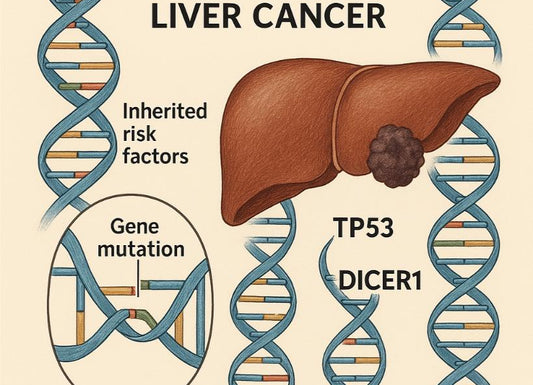Does brown rice spike blood sugar?
 Written By
Abel Tamirat, MD
Written By
Abel Tamirat, MD

Brown rice does raise blood sugar, but more slowly than white rice. If you're living with diabetes or prediabetes, you might wonder if this "healthier" grain is still safe. The short answer: yes, in small portions-and depending on what you eat it with.
This article breaks down how brown rice affects blood sugar, how it compares to other carbs, and how to eat it without big spikes.
What is brown rice?
Brown rice is a whole grain. It has all three parts of the grain: the bran, germ, and endosperm. These parts give it more fiber, vitamins, and minerals than white rice.
That also means it digests slower. But it's still mostly carbohydrate-about 45 grams per cooked cup. So it still raises blood sugar.
How fast does brown rice raise blood sugar?

The glycemic index (GI) of brown rice is in the medium range-about 68. That means it raises blood sugar more slowly than white rice, which often has a GI over 75.
But portion size matters. The glycemic load (GL) of 1 cup of brown rice is about 22, which is high. That means if you eat a full cup, it can still spike your glucose.
To reduce that:
-
Stick to 1/2 cup or less per meal
-
Eat it with protein, healthy fats, or high-fiber veggies
-
Avoid pairing it with juice, sweet sauces, or bread
For more on how to read your results, see our Urine Glucose Levels Chart.
Is brown rice better than white rice?

Yes. Compared to white rice, brown rice:
-
Has more fiber and nutrients
-
Has a lower glycemic index
-
Causes smaller glucose spikes
One large study found that swapping 50g of white rice with brown rice reduced type 2 diabetes risk by 16%.
But brown rice still impacts blood sugar. It's not a free pass.
What does CGM data show?
People using continuous glucose monitors (CGMs) see that brown rice causes a smaller spike than white rice. But the rise can still be 30–50 mg/dL depending on portion and food pairing.
If you eat brown rice by itself, expect a bigger spike than if you eat it with grilled chicken and spinach.
Can you eat brown rice with prediabetes?

Yes, if you:
-
Limit to 1/4 to 1/2 cup
-
Pair it with protein and fiber
-
Eat it earlier in the day when insulin sensitivity is better
-
Avoid eating it two meals in a row
Try checking your blood sugar 1–2 hours after eating. If it's under 140 mg/dL, you're likely handling it well. For more on this topic, read our guide on dizziness after eating as a sign of diabetes.
Can you eat brown rice with type 2 diabetes?
It depends on your A1C, medications, and overall goals. If your blood sugar is well managed, you may be able to include brown rice in small portions and test your response with a glucometer or CGM to see how your body reacts. However, if your A1C is high or you’re on insulin, even small amounts may cause spikes, and you might need to reduce how often you eat it or consider swapping it out altogether.
You might also be interested in a guide on a 7-day meal plan for kidney disease and diabetes, as many people with diabetes also need to be mindful of kidney health.
What are better alternatives to brown rice?
If brown rice spikes your glucose, try:
-
Barley: Lower GI (~28), more fiber
-
Lentils: Very low GI, high protein
-
Quinoa: More protein and minerals
-
Cauliflower rice: Very low carb
These can often be swapped 1:1 in recipes.
Check out our guide on What to Drink to Lower Blood Sugar Immediately: Safe and Effective Options.
Should you worry about arsenic in brown rice?
Brown rice can contain more arsenic than white rice. That's because it keeps the outer layer, where arsenic tends to build up.
To lower risk:
-
Rinse rice before cooking
-
Cook in extra water (6:1 ratio), then drain
-
Don’t eat brown rice daily
To learn more about how your body processes toxins, read about how to detox your liver.
So, does brown rice spike blood sugar?
Yes-but not as much as white rice.
Brown rice raises blood sugar because it’s still a high-carb food. But it has more fiber and digests slower than white rice.
For most people with prediabetes or type 2 diabetes, small amounts of brown rice can fit into a blood sugar-friendly plan.
How to eat brown rice without big spikes
-
Keep portions small (1/2 cup or less)
-
Always pair with protein and fiber
-
Add healthy fats like olive oil or avocado
-
Eat earlier in the day
-
Walk for 10–15 minutes after your meal
-
Avoid eating rice two meals in a row
Final takeaway: brown rice isn’t off-limits
Brown rice is a better choice than white rice, but portion and food pairing matter.
Your blood sugar response may vary, so use a meter or CGM to see what works for you. And if you’re trying to avoid spikes altogether, other grains or low-carb swaps might serve you better.
Manage blood sugar smarter, not carb-free. With Ribbon Checkup, see how foods like brown rice affect your glucose and get tips tailored to your results.
Related reads on Ribbon Checkup
-
Understanding high glucose in urine: Causes, symptoms, and management
-
Understanding Your Blood Sugar Levels: What's Normal and What's Not
References
Can brown rice slow the spread of type 2 diabetes? | Harvard T.H. Chan School of Public Health. (2012, January 4). Harvard T.H. Chan School of Public Health; HSPH. https://hsph.harvard.edu/news/gnet-brown-rice-diabetes/
Rahim, A., Mohd Noor Norhayati, & Zainudin, A. M. (2021a). The effect of a brown-rice diets on glycemic control and metabolic parameters in prediabetes and type 2 diabetes mellitus: a meta-analysis of randomized controlled trials and controlled clinical trials. PeerJ, 9, e11291–e11291. https://doi.org/10.7717/peerj.11291
Rahim, A., Mohd Noor Norhayati, & Zainudin, A. M. (2021b). The effect of a brown-rice diets on glycemic control and metabolic parameters in prediabetes and type 2 diabetes mellitus: a meta-analysis of randomized controlled trials and controlled clinical trials. PeerJ, 9, e11291–e11291. https://doi.org/10.7717/peerj.11291
The whole truth about whole grains. (2025). Mayo Clinic. https://www.mayoclinic.org/healthy-lifestyle/nutrition-and-healthy-eating/in-depth/whole-grains/art-20047826

Dr. Abel Tamirat is a licensed General Practitioner and ECFMG-certified international medical graduate with over three years of experience supporting U.S.-based telehealth and primary care practices. As a freelance medical writer and Virtual Clinical Support Specialist, he blends frontline clinical expertise with a passion for health technology and evidence-based content. He is also a contributor to Continuing Medical Education (CME) programs.



